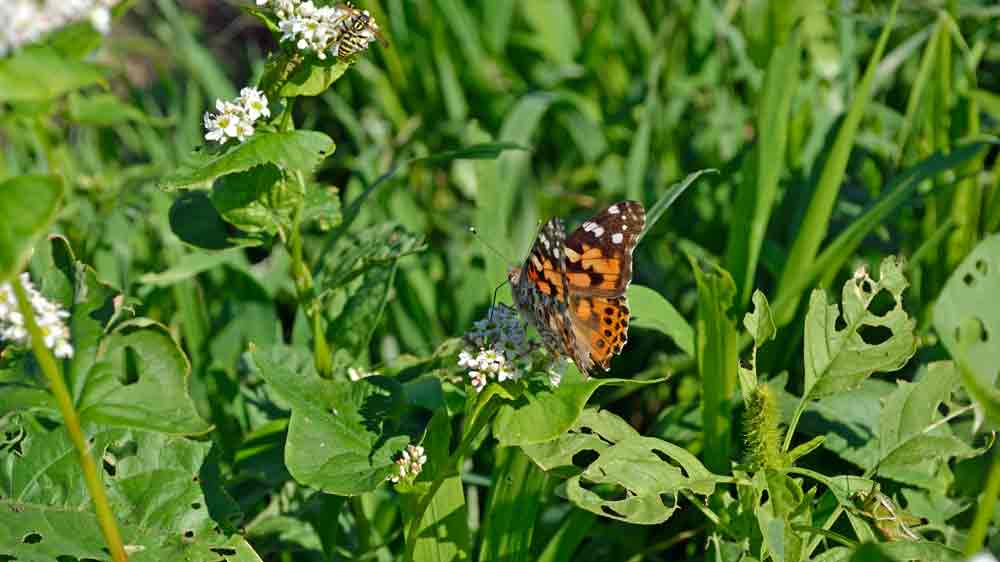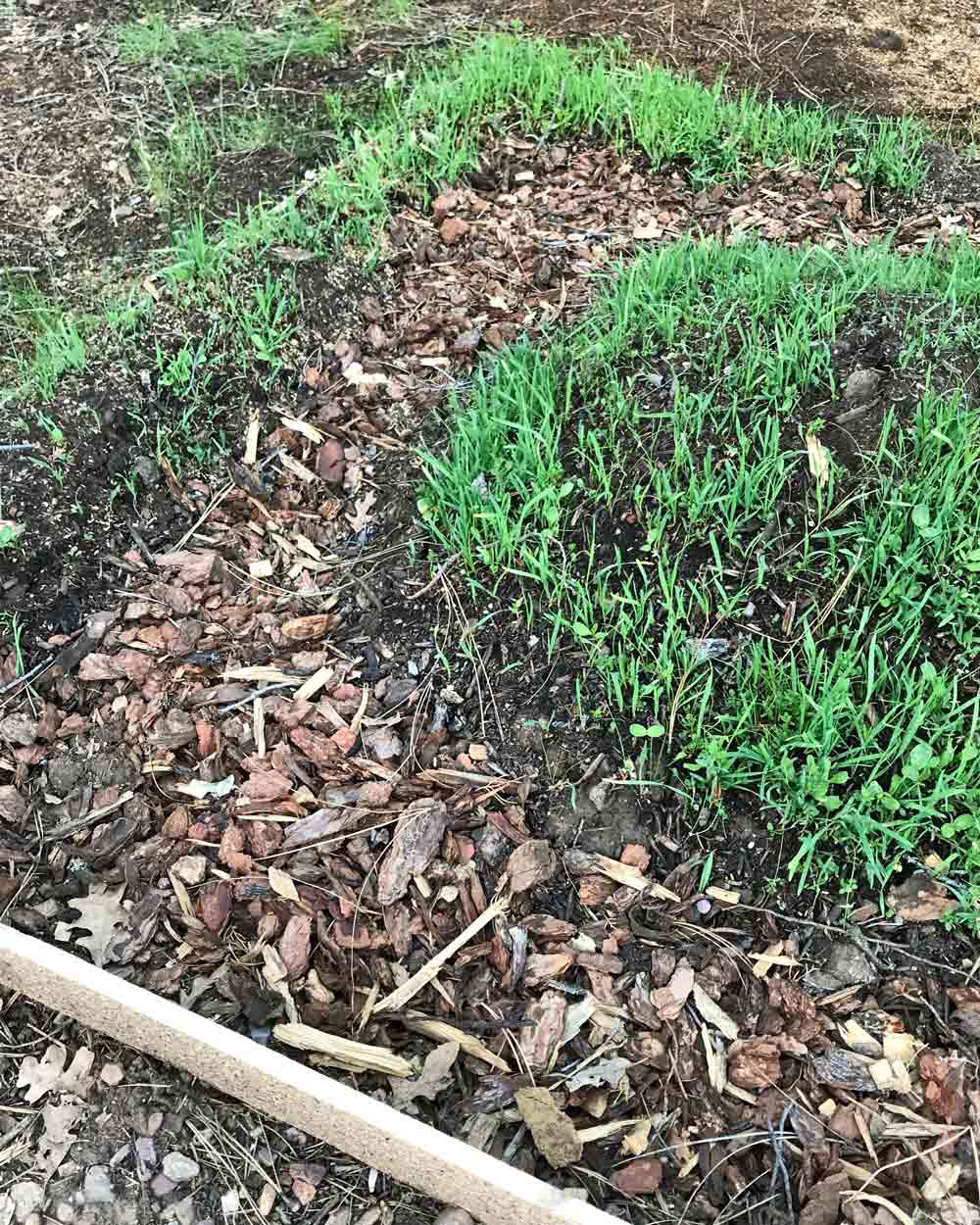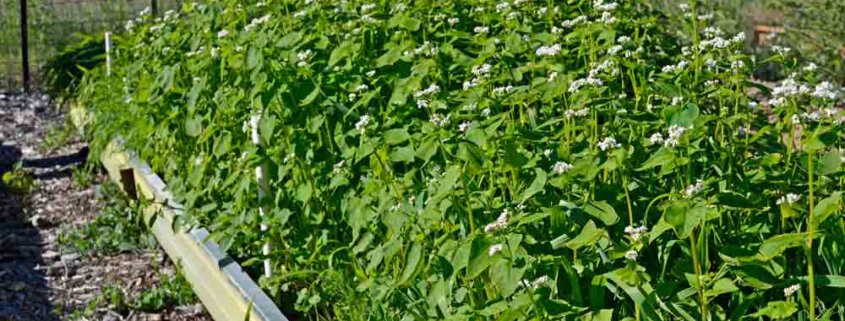Cover Crops Boost Fertility While Beating Weeds
Historically, our soils were developed through the interaction of diverse plant and biology growth but much of this has been lost through large scale commercial agriculture becoming increasingly dependent on chemicals to feed the plants, instead of the soil and its organisms. This “trickle-down” effect has also affected home gardeners and small scale growers, and now we struggle to find ways to bring that plant diversity back to the garden.
Planting a multi-species cover crop in your garden will greatly stimulate the soil life and biology while suppressing weeds, interrupting disease cycles and even supply nutrients for next season’s crops.
We spend a significant amount of time teaching straightforward ways home gardeners can improve their soil, so we are often asked: “How can I manage pest and disease issues in my garden?” The simplest answer is: “Improve your soil.” Immediately followed by: “Plant a cover crop.”
The next question we hear is usually: “How will that help my pest and disease issues?”
Let’s take a closer look, and remember that a diverse cover crop mix can accomplish several of these at once.
We’ll start with a few of our customers’ gardens and let them tell you about their experiences in their own words! Then, we’ll explain how and why planting a cover crop in your garden this season will boost your soil’s fertility.
Crimson Clover

Tomatoes with Crimson Clover cover crop. A perfect illustration of the “no bare soil” concept.
“Experimented in one of my six raised beds (4’W x 16’L) and was very happy with virtually no weeds. Plan to use this as a between plantings cover crop going forward!!”
– Skipper
“I needed a ground cover that would improve my really bad soil and offer the disappearing bees and pollinators a refreshment stand. As usual, Terroir filled the bill. I planted these seeds in several different locations and they sprouted and grew in every one of them – from crushed granite mixed with sandy soil to soil that had been covered for YEARS by heavy green plastic. Full sun, partial shade – it made no difference. They thrived.
And two days ago they started to bloom AND I saw three honey bees land on them. “
– Karen
Garden Cover Up Mix

“Germination was excellent. I have a beautiful cover crop that the bees are totally enjoying. This mix has been the easiest cover crop I have ever planted, no fuss, very little upkeep, just add a little moisture. It’s so magnificent I spend 5-10 minutes every day just enjoying it.”
– Linda
“I’ve grown vegetables in my 4 4’x12′ raised beds for over 25 year, renewing the soil annually with a layer of compost; yields had become just OK. Two autumns ago I planted the Cover Up Mix, turned it into the soil in spring, covered the beds with the usual compost; happily report last year’s yields were up appreciably. The garden was positively lush (an unusual state in our high desert environment with 2017’s prolonged high summer heat). So I planted your cover crop mix again last fall and am looking forward to this year’s results. Definitely recommend!”
– Kerry
“First time I’ve used a cover crop; planted 6 weeks ago in 1/2 of my garden because the other half was still producing. Easy to plant, grew quickly with great coverage. The best part is that everywhere the cover crop was planted there are NO WEEDS! Morning glory has been my biggest problem and I have none where I planted the cover crop. Seeing the comparison between the two halves has made me a believer… already re-ordered enough for the whole garden for next year, and plan on using it in my flower beds, too. Highly recommend!”
– Pamela
Soil Builder Mix

“Great germination, fast early growth and very thick. Really looking forward to better soil.”
– Victoria
“I love this! It is growing so healthy and lush. I love the great variety of plants in it. It will get turned in as a green manure day after tomorrow and I am so looking forward to reaping the benefits!”
– Donna
How and Why Cover Crops Work

Suppress Weeds
The best way to suppress weeds is with a highly competitive crop that quickly forms a canopy and shades weeds out. Summer annual cover crops like buckwheat and crimson clover form tight, dense canopies and will often outgrow many weeds. A diverse mixture of cover crops like our Garden Cover Up Mix – which includes both buckwheat and crimson clover – is much more weed-competitive than a single species.
Reduce Weeds in Next Year’s Garden
Planted in late summer or early fall as part of our Garden Cover Up mix, cereal rye is one of the best weed-suppressing tools if your next crop in that bed will be a legume like beans, chickpeas, lentils, peas, or soybeans as it aggressively ties up nitrogen – leaving little for weeds to use.
The legumes don’t mind, as they just fix their own nitrogen.
If your next crop is nitrogen demanding like corn or green leafy vegetables, a fall legume like hairy vetch can be used to both produce nitrogen and suppress weeds. Vetch does make nitrogen, but when it is cut or frost-killed the nitrogen is a protein and must decompose before it is available to either crop or weeds.
Both rye and hairy vetch form a thick mulch when cut that helps suppress small-seeded weeds like Palmer amaranth – better known as pigweed – by starving them of sunlight after germination so they run out of energy. Both rye and vetch produce biochemical compounds that stunt weed growth, called allelopathy.

Fix Nitrogen
This is best accomplished with a diverse mix dominated by legumes like our Garden Cover Up Mix. Remember, mixtures are capable of fixing much more nitrogen in a more stable and plant-useable form than single-species cover crops alone.

Build Soil Organic Matter
As gardeners, this should be our very first priority.
As we have learned more about how soil organic matter is formed, we have come to realize the most important contributor to soil organic matter happens in the root zone through what is known as root exudates – biologically active compounds deposited into the soil through the roots – and not simply the aboveground plant growth as previously thought.
Therefore, the best and fastest way to dramatically improve your soil health and fertility is through significantly increasing root growth of a diversity of species and plant families, along with as much aboveground biomass as possible.
Diversity of plant families makes for a more nutritious diet for the soil organisms that build organic matter in the soil, as some species have root exudates high in sugar, others high in protein, others high in lipids, while others are high in minerals; when combined, it makes a more complex and balanced diet than a single cover crop can provide. In general, since the production of root exudates depend on the level of photosynthesis, the more biomass a plant produces, the higher the root exudates and the faster you build soil organic matter.
To Really Build Soil Organic Matter
Inoculate your first planting with our mycorrhizal fungi – MycoGrow. Mycorrhizal fungi form mutually beneficial relationships with plant roots, extending their reach and monitoring nearby soil nutrients, feeding needed nutrients that are otherwise out of reach of the plant roots.
The soil proteins – called glomalin – produced by the mycorrhizal hyphae is the most persistent form of organic matter known and does wonders for the soil.
Now It’s Your Turn
Hopefully, you have a much better understanding of why and how cover crops can make a big positive difference in your garden, no matter if you have a traditional row garden, raised beds, or large containers. If you have soil, cover crops will improve it!
We’ve watched the skepticism on people’s faces when we talk about the multiple benefits of using cover crops in their garden, but then when they try them, the skeptical looks turn to astonishment when they describe how much better their gardens performed.
Help Us Help You
Did this help you understand cover crops better? Do you know a gardening friend who could use this information in their garden?
Please share this with your friends – either with the buttons below or on your social network of choice.

 2019 Terroir Seeds
2019 Terroir Seeds